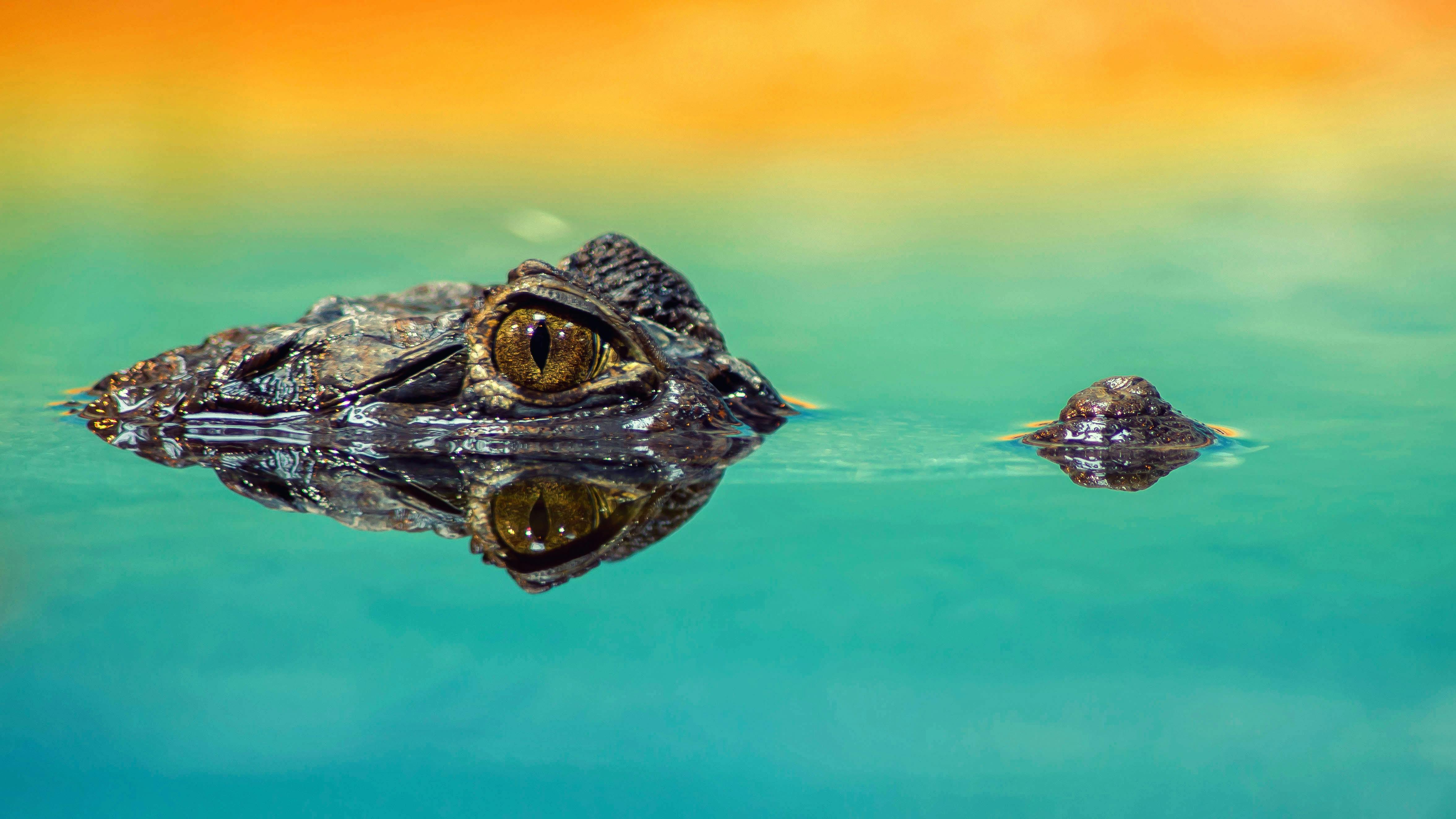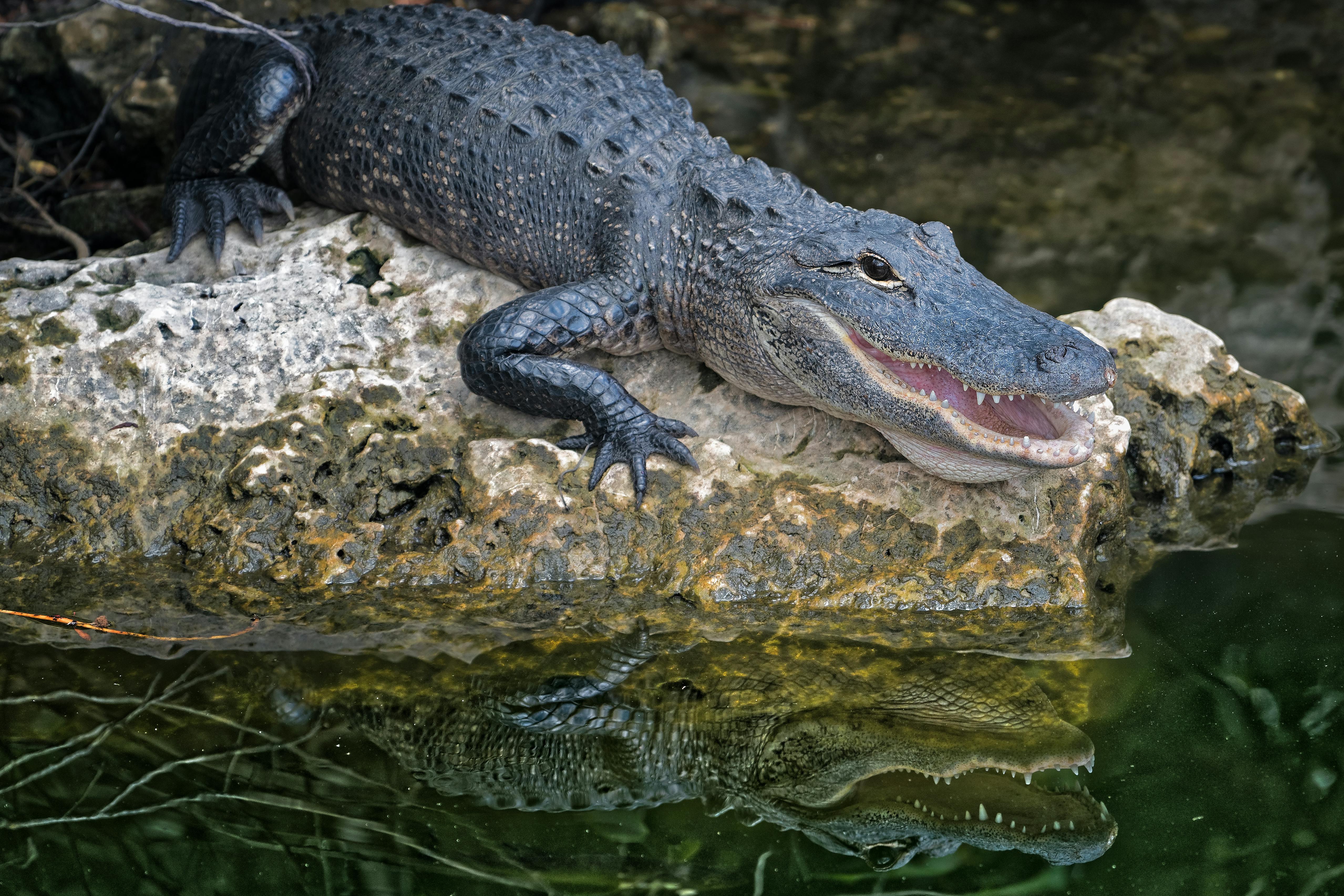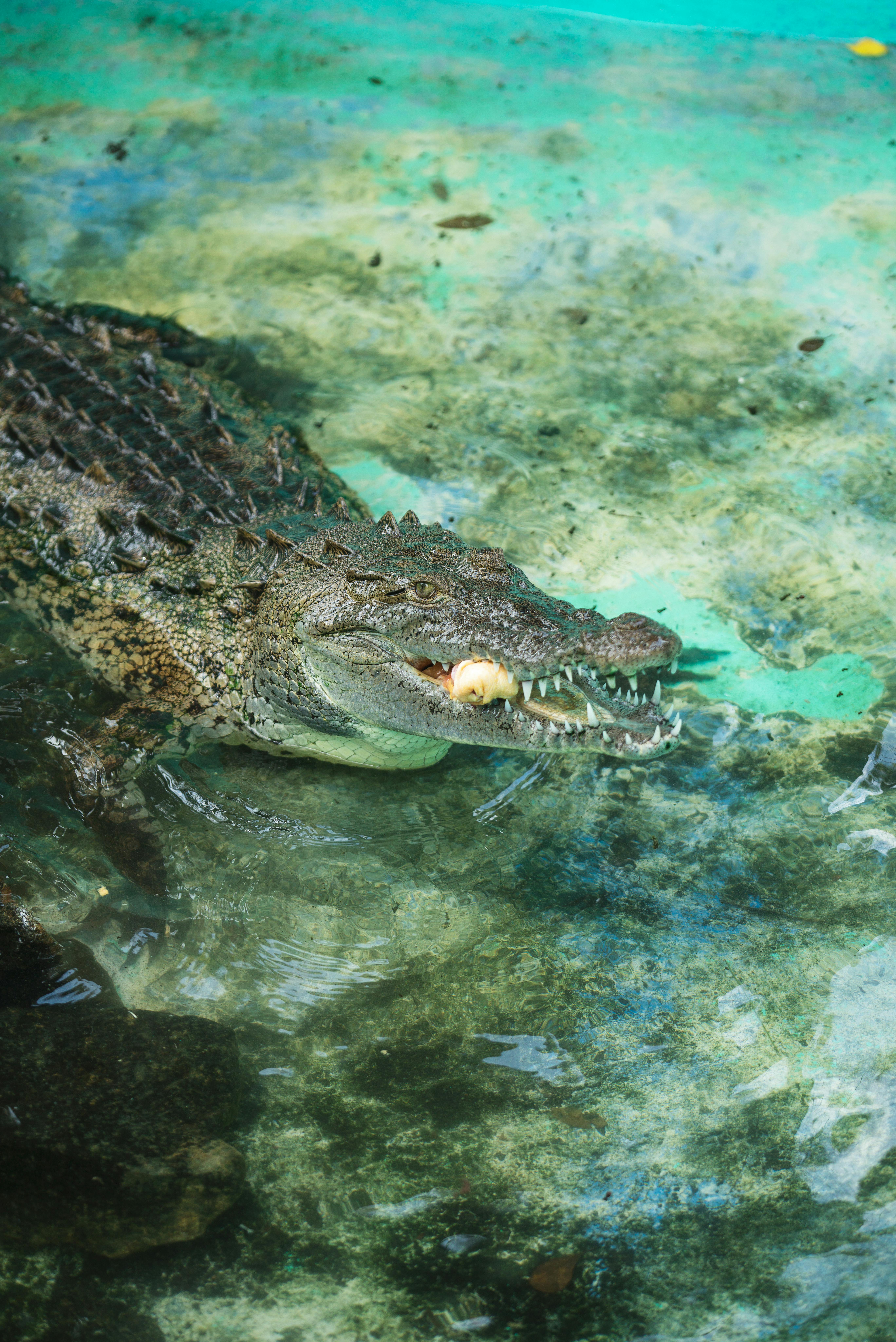Table of Contents
Imagine a world where crocodiles and capybaras coexist peacefully, where instead of being prey, capybaras casually lounge on the backs of crocodiles. It may seem like an unlikely scenario, but it is a fascinating reality that has left scientists puzzled – why don’t crocodiles attack capybaras? This unusual relationship between these two seemingly incompatible species has captivated researchers and nature enthusiasts alike, providing a glimpse into the intricate dynamics of the animal kingdom. In this article, we will explore the fascinating reasons behind this peculiar alliance and unveil the secrets behind this unlikely friendship.

Habitat and Distribution
Capybaras: The Largest Rodents
As the largest rodents in the world, capybaras form a key part of the diverse ecosystems they inhabit. These fascinating creatures are primarily found in the grasslands, marshes, and wetlands of South America, often near bodies of water such as rivers, lakes, and ponds. Their versatile habitat preferences allow them to adapt well to both terrestrial and semi-aquatic environments.
Crocodiles: Masters of Aquatic Environments
Crocodiles, on the other hand, have long been known as the masters of aquatic environments. With their streamlined bodies, powerful jaws, and expert swimming abilities, these ancient reptiles are well-suited to thrive in rivers, lakes, estuaries, and even coastal areas. They are primarily found in tropical regions across the globe, including parts of Africa, Asia, Australia, and the Americas.
Geographical Overlap
The habitats of capybaras and crocodiles often overlap, especially in South America. This coexistence creates a unique scenario where these two distinct species share the same environment, leading to an intriguing relationship that defies conventional predator-prey dynamics. As we delve deeper into their dietary preferences, behavioral adaptations, and mutualistic relationships, we gain a better understanding of why crocodiles do not typically attack capybaras.
Dietary Preferences
Capybaras: Herbivores of the Grasslands
Capybaras are herbivores, and their diet mainly consists of plant matter. They graze on a wide range of aquatic and terrestrial vegetation, including grasses, reeds, ferns, and aquatic plants such as water hyacinths. Their ability to digest fibrous plant material is facilitated by their enlarged cecum, a specialized part of their digestive system that helps break down cellulose. The abundance of grasslands in their habitat ensures a plentiful food supply.
Crocodiles: Carnivores with Varied Preferences
In contrast to capybaras, crocodiles are carnivorous reptiles with a preference for meat. Their diet primarily consists of fish, amphibians, birds, and other small to medium-sized mammals that venture near the water. However, their feeding habits can vary depending on factors such as availability of prey, size of the crocodile, and the specific ecosystem they inhabit. Some larger crocodile species can even hunt larger animals such as deer or livestock.
Limited Predation
Despite their stark dietary differences, it is remarkable to note that crocodiles do not frequently prey upon capybaras, even though they share the same habitats. This suggests the existence of some unique factors that allow these species to coexist harmoniously. By exploring the behavioral adaptations of both capybaras and crocodiles, we can gain insight into this intriguing phenomenon.

Behavioral Adaptations
Group Living and Vigilant Strategies
Capybaras exhibit a fascinating adaptation that contributes to their survival in crocodile-infested environments. They are highly social animals who live in large family groups, often consisting of multiple adult males, females, and their offspring. This group living strategy provides strength in numbers, enhancing their ability to detect potential threats such as approaching crocodiles. Capybaras utilize a combination of vigilant behavior, such as standing on their hind legs, vocalizations, and physical proximity to ensure the safety of the group.
Understanding Camouflage
Apart from their group living strategies, capybaras also take advantage of their natural camouflage to avoid detection by crocodiles. Their fur blends seamlessly with the surrounding grasslands, providing them with an excellent defense mechanism against predators. By remaining motionless and relying on their protective coloration, they can evade the watchful eyes of crocodiles and other potential threats.
Passive Defense Mechanisms
While capybaras primarily rely on group living and camouflage for protection, they also possess a remarkable passive defense mechanism that further deters crocodile predation. Their tough, thick skin acts as a formidable barrier against potential predators, including crocodiles. This natural armor not only provides protection but also helps capybaras escape relatively unscathed from any potential attacks.
Mutualistic Relationship
In the intertwining worlds of capybaras and crocodiles, an intriguing mutualistic relationship can be observed. Mutualism refers to a symbiotic relationship between organisms of different species, where both parties benefit from their association. In this case, the capybaras and crocodiles share mutual advantages by coexisting peacefully in their shared habitats.
Skin Cleaning Behavior
One significant aspect of this mutualistic relationship is the capybara’s role in crocodile skin cleaning. Crocodiles have parasites, algae, and dead skin that accumulate on their bodies over time. Capybaras, with their grooming behavior and herbivorous diet, have evolved to take advantage of this. They actively seek out crocodiles and use their strong incisors to clean the reptile’s skin, effectively removing unwanted debris and providing relief from parasites. This grooming behavior benefits the crocodiles by improving their overall health and hygiene.
Thermoregulation Assistance
Capybaras also contribute to the well-being of crocodiles by serving as convenient thermoregulation surfaces. Crocodiles are ectothermic, meaning they rely on external heat sources to regulate their body temperatures. By basking on the backs of capybaras, crocodiles can absorb the warmth radiated by the larger mammals, aiding in their thermoregulation process. This mutualistic association allows crocodiles to conserve energy while maximizing their exposure to the sun, essential for their overall health and survival.

Potential Threats
Predators of Capybaras
While crocodiles do not pose a significant threat to capybaras, these largest rodents face predation from other formidable predators. In their natural habitats, capybaras may encounter jaguars, pumas, anacondas, and large raptors such as harpy eagles. These predators, equipped with powerful hunting techniques and adaptations, view capybaras as potential prey. Adapting to the presence of such predators is an ongoing challenge for capybaras and plays a vital role in their survival.
Human Activities
Unfortunately, the biggest threat to both capybaras and crocodiles comes from human activities. Habitat destruction due to deforestation, conversion of grasslands to agricultural land, and urban encroachment disrupts their habitats, leaving them vulnerable to various risks. Additionally, illegal hunting and poaching for their fur, meat, or body parts further deplete their populations, pushing them towards the edge of endangerment.
Climatic Factors
In recent years, climate change and its associated implications have become pressing concerns. Rising temperatures, changes in precipitation patterns, and other climatic factors can directly affect the habitats and ecosystems shared by capybaras and crocodiles. Changes in water levels, food availability, and nesting sites can disrupt the delicate balance of their relationship, potentially putting both species at risk.
Scientific Studies
Observational Research
To gain a deeper understanding of the unusual relationship between capybaras and crocodiles, scientists have turned to observational research. By closely observing the behaviors and interactions of these species in their natural habitats, researchers can draw valuable insights into the intricacies of their coexistence.
Field Studies and Data Collection
Field studies play a crucial role in collecting firsthand data to analyze the dynamics of the mutualistic relationship. Researchers employ various methods such as setting up camera traps, conducting behavioral surveys, and collecting fecal samples for dietary analysis. Through extensive fieldwork, scientists gather valuable information that helps unravel the complexities of this unique association.
Documentation of Interaction
Scientists proficient in ethology, the study of animal behavior, have dedicated efforts to document the interactions between capybaras and crocodiles. These documented accounts contribute to a larger body of scientific knowledge and provide a foundation for further research and conservation initiatives. By understanding the intricacies of their interactions, researchers can propose conservation strategies that benefit both species in the long run.
Implications for Conservation
Preserving Biodiversity
The coexistence of capybaras and crocodiles highlights the importance of preserving biodiversity within ecosystems. These two species, though seemingly different in many aspects, demonstrate the interconnectedness of life forms. By safeguarding the habitats that support their survival and the survival of countless other organisms, we can maintain the delicate balance of nature and protect the rich biodiversity of our planet.
Protecting Habitats
As human activities continue to encroach upon the natural habitats of capybaras and crocodiles, it is crucial to prioritize the conservation of these ecosystems. Creating protected areas, establishing wildlife corridors, and implementing sustainable land-use practices are essential steps towards ensuring the long-term survival of these species. By protecting their habitats, we also safeguard the habitats of other species that rely on these delicate ecosystems.
Educational Initiatives
Education plays a vital role in conservation efforts. By raising awareness about the unique relationships found in nature, such as that between capybaras and crocodiles, we can inspire people to appreciate and protect these remarkable creatures. Educational initiatives, both locally and globally, can help foster a sense of responsibility towards wildlife and encourage positive actions for conservation.
Similar Relationships in Nature
Symbiotic Relationships
The mutualistic relationship between capybaras and crocodiles is just one example of symbiotic interactions in nature. Symbiosis refers to the long-term interaction between two different species, where both derive some form of benefit. Other examples include the relationship between cleaner fish and larger marine species or the mutual dependence between pollinators and flowering plants. These intricate associations remind us of the interconnectedness of all living beings.
Unconventional Associations
Nature is full of unconventional associations that challenge our understanding of traditional ecological interactions. From leaf-cutter ants and fungi to oxpecker birds and large mammals like giraffes or rhinoceroses, these extraordinary relationships defy conventional notions and emphasize the complexity and adaptability of life on Earth. Exploring these associations not only expands our knowledge but also deepens our appreciation for the intricacies of our natural world.
Coexistence Strategies
The coexistence strategies observed between capybaras and crocodiles serve as inspiration for further research into the mechanisms employed by different species to share habitats successfully. Understanding the factors that allow these seemingly incompatible species to coexist can offer valuable insights into conservation and management strategies in other ecosystems. By identifying common themes and adaptive strategies, we can develop a more comprehensive understanding of the intricate web of life.
Theoretical Explanations
Cost-Benefit Analysis
The coexistence of capybaras and crocodiles can be examined from a cost-benefit perspective. It is possible that the potential risks and energy expenditure associated with attacking capybaras outweigh the benefits gained by such predation. Crocodiles may find it more efficient to focus on smaller, more abundant prey items that require less energy and pose fewer threats during capture. This cost-benefit analysis provides a logical explanation for why crocodiles generally do not target capybaras.
Evolutionary Perspectives
Evolutionary perspectives shed light on how the coexistence between capybaras and crocodiles has developed over time. It is possible that capybaras have evolved various adaptations, such as their social living strategies and natural defenses, to minimize predation risk from crocodiles. Similarly, crocodiles may have evolved to recognize capybaras as a non-viable or more challenging prey option and have subsequently diverted their hunting efforts to other potential food sources. These evolutionary pressures have likely influenced their current relationship.
Alternative Hypotheses
While the aforementioned explanations provide valuable insights, it is important to consider alternative hypotheses to fully comprehend the unusual relationship between capybaras and crocodiles. Factors such as competition for resources, habitat partitioning, or the influence of other species within the ecosystem may also play a role in preventing significant predation from crocodiles. Further research is needed to explore these alternative hypotheses and evaluate their validity.
Future Research Directions
Long-Term Monitoring
To gain a more comprehensive understanding of the capybara-crocodile relationship, it is necessary to conduct long-term monitoring studies in different ecosystems. By tracking changes in population dynamics, predation patterns, and environmental variables over an extended period, scientists can identify trends and potential shifts in this unique association. Long-term monitoring will provide crucial insights into the stability and resilience of the capybara-crocodile relationship in the face of ever-changing environmental pressures.
Understanding Ecological Factors
Exploring the ecological factors that influence the coexistence of capybaras and crocodiles is essential for future research. Factors such as prey availability, habitat quality, and the influence of other species within the ecosystem can significantly impact their relationship. By investigating these interconnected factors, researchers can unlock the secrets behind their successful coexistence and apply this knowledge to other ecosystems facing similar dynamics.
Examining Other Ecosystems
While the capybara-crocodile relationship has been extensively studied in the grasslands of South America, it is vital to expand research efforts to other ecosystems where these species coexist. Studying their interactions in diverse environments can uncover new insights into the adaptations, mechanisms, and drivers behind their intriguing relationship. By broadening our research focus, we can gain a more comprehensive understanding of the complex web of interactions between species across different habitats worldwide.
In conclusion, the relationship between capybaras and crocodiles is a testament to the intricacies of nature. Despite their stark dietary differences and the potential for predation, these species have developed a unique coexistence marked by mutualistic benefits. By exploring their adaptations, studying their behaviors, and understanding the ecological factors at play, we gain a deeper appreciation for the complexities of life on Earth. As we move forward, it is crucial to prioritize conservation efforts that protect their habitats, preserve biodiversity, and foster a greater understanding of the interconnections that sustain our planet. Together, we can ensure the long-term survival and coexistence of capybaras, crocodiles, and countless other remarkable species.

